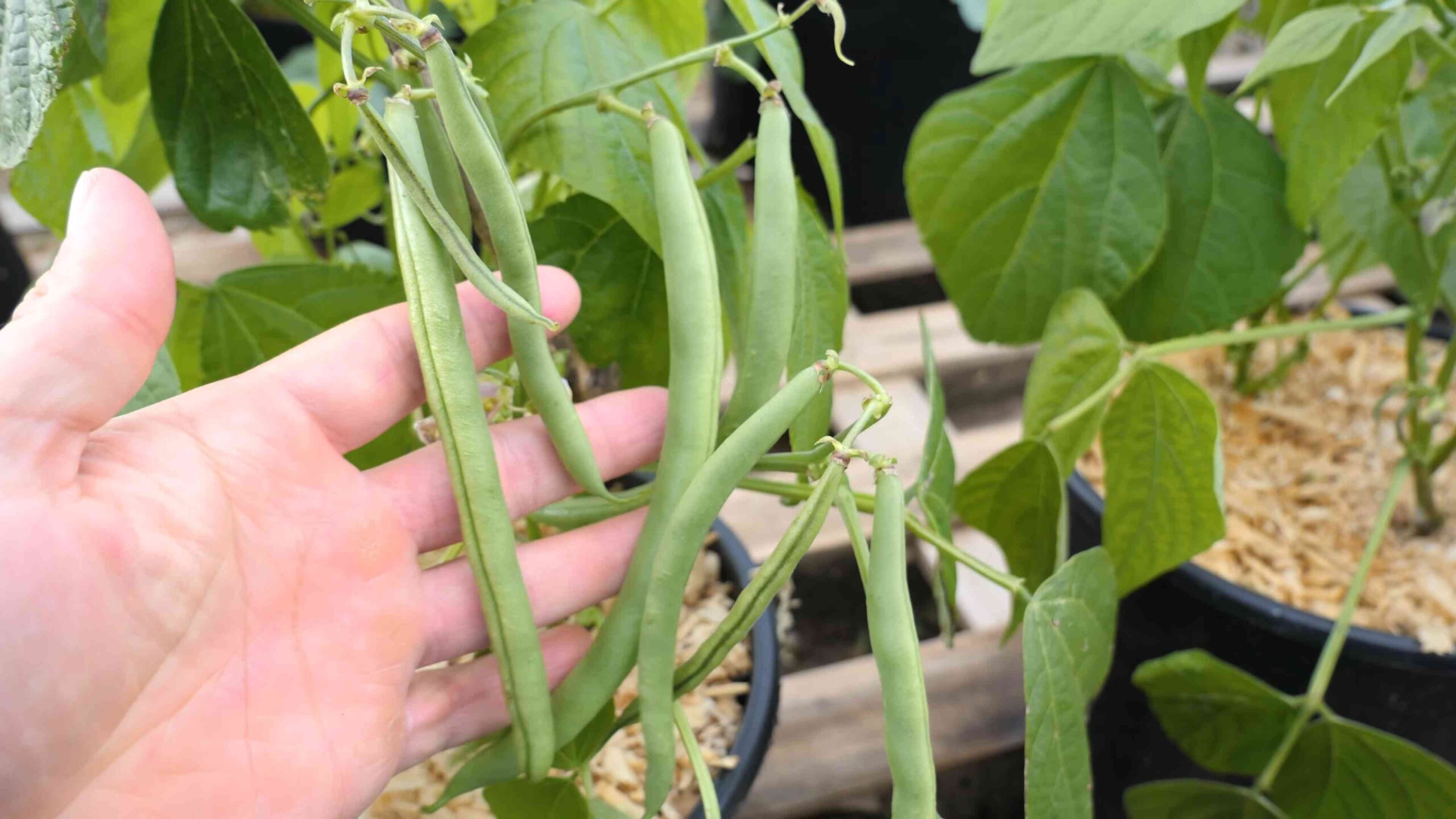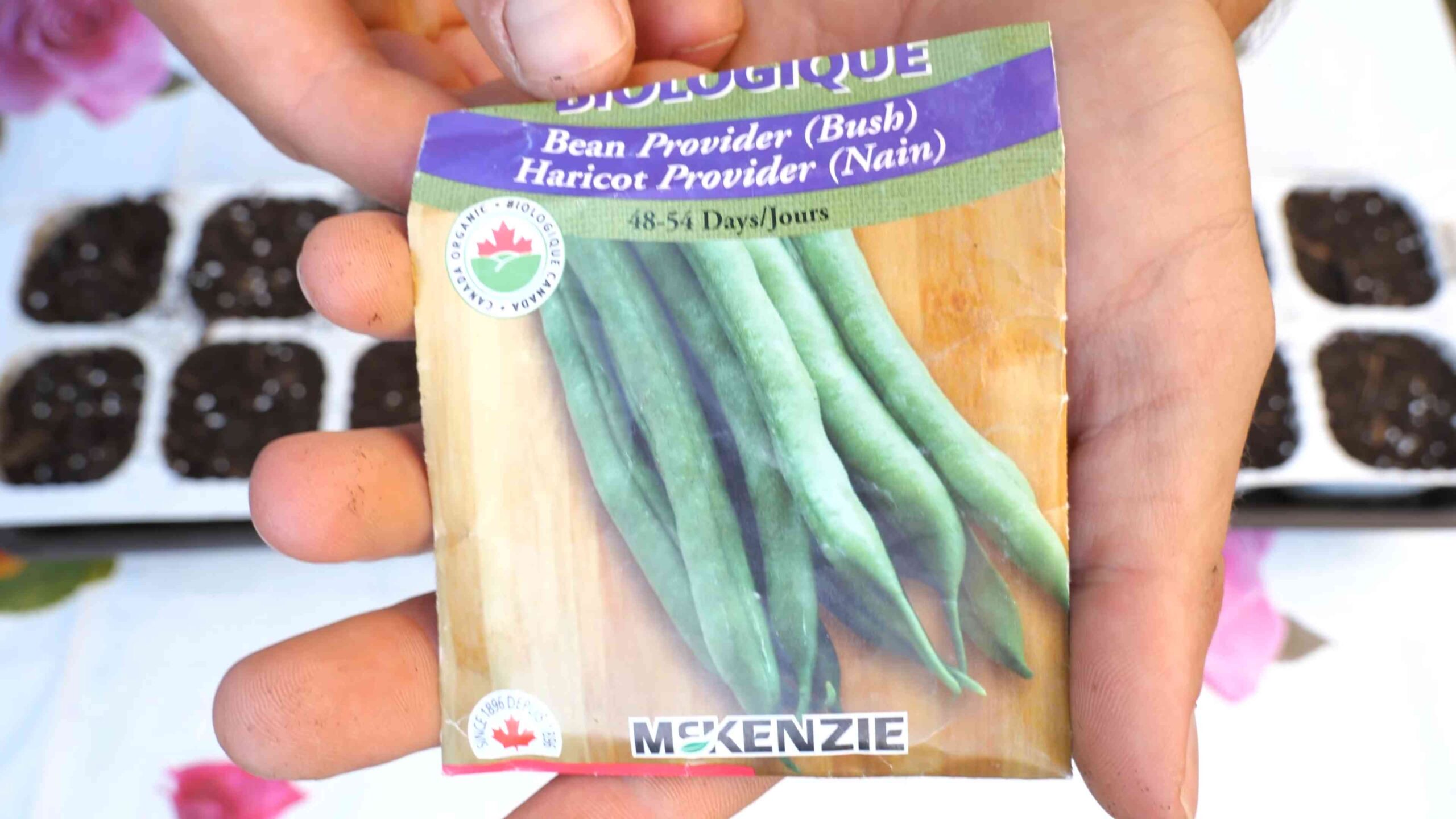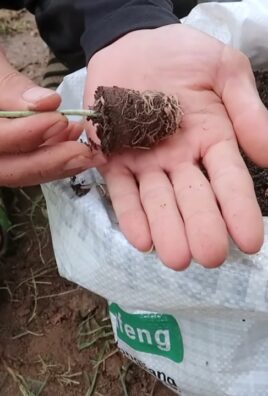Plant and Harvest Bush Beans: Imagine stepping outside your back door and picking fresh, crisp green beans for dinner – a taste of summer right at your fingertips! That’s the magic of home gardening, and it’s easier than you might think, especially when it comes to growing bush beans. For generations, cultivating your own food has been a source of pride and sustenance. From ancient civilizations tending their plots to victory gardens during wartime, the act of growing food connects us to a rich history.
But let’s be honest, not everyone has acres of land or hours to dedicate to gardening. That’s where these DIY tricks and hacks come in! I’m going to share some simple, effective methods to help you successfully plant and harvest bush beans, even if you’re a complete beginner or have limited space. We’ll cover everything from choosing the right variety to maximizing your yield.
Why do you need these tips? Because store-bought beans simply can’t compare to the flavor and satisfaction of homegrown ones. Plus, knowing exactly where your food comes from and how it was grown is a huge peace of mind. So, grab your gardening gloves, and let’s get started on your journey to delicious, homegrown bush beans!

Planting and Harvesting Bush Beans: A Beginner’s Guide
Hey there, fellow gardening enthusiasts! Today, I’m going to walk you through the incredibly rewarding process of planting and harvesting bush beans. Trust me, even if you’re a complete newbie, you can totally do this! Bush beans are relatively easy to grow, produce a bountiful harvest, and are absolutely delicious. So, grab your gardening gloves, and let’s get started!
Choosing Your Bush Bean Variety
First things first, let’s talk about choosing the right bush bean variety for your garden. There are tons of options out there, each with its own unique characteristics. Here are a few popular choices:
* Blue Lake Bush Beans: These are a classic choice, known for their excellent flavor and high yields. They’re also relatively disease-resistant.
* Contender Bush Beans: As the name suggests, these beans are tough and reliable. They’re early producers, meaning you’ll get your harvest sooner.
* Provider Bush Beans: Another early-maturing variety, Provider beans are known for their adaptability to different climates.
* Roma II Bush Beans: If you love Italian cuisine, these flat, wide beans are perfect for you. They have a rich, buttery flavor.
* Golden Wax Bush Beans: These yellow beans are not only visually appealing but also have a delicate, sweet flavor.
Consider your climate, personal preferences, and what you plan to do with your harvest when making your decision. I personally love Blue Lake for their versatility, but experiment and find what works best for you!
Preparing Your Garden Bed
Okay, now that we’ve chosen our bean variety, it’s time to prepare the garden bed. Bush beans need well-drained soil and plenty of sunlight (at least 6-8 hours a day).
1. Choose a Sunny Location: As I mentioned, sunlight is key. Pick a spot in your garden that gets plenty of direct sunlight throughout the day.
2. Clear the Area: Remove any weeds, rocks, or debris from the area where you’ll be planting. Weeds compete with your beans for nutrients and water, so it’s important to get rid of them.
3. Amend the Soil: Bush beans prefer soil that is rich in organic matter. I like to amend my soil with compost or well-rotted manure. This will improve drainage, aeration, and nutrient content. Spread a 2-3 inch layer of compost over the area and work it into the top 6-8 inches of soil.
4. Test the Soil pH: Bush beans thrive in soil with a pH between 6.0 and 7.0. You can purchase a soil testing kit at your local garden center to check the pH. If the soil is too acidic (below 6.0), you can add lime to raise the pH. If it’s too alkaline (above 7.0), you can add sulfur to lower the pH.
5. Level the Soil: Rake the soil to create a smooth, even surface. This will make planting easier and ensure that the beans are planted at the correct depth.
Planting Your Bush Beans
Alright, the soil is prepped, and we’re ready to plant! Bush beans are typically planted directly in the garden after the last frost.
1. Check the Last Frost Date: This is crucial! Bush beans are sensitive to frost, so you need to make sure the danger of frost has passed before planting. You can find your local last frost date online or by contacting your local extension office.
2. Sow the Seeds: Plant the bean seeds about 1 inch deep and 2-3 inches apart in rows that are 18-24 inches apart. I like to use a garden trowel to create small furrows for the seeds.
3. Cover the Seeds: Gently cover the seeds with soil and pat it down lightly.
4. Water Thoroughly: Water the newly planted seeds thoroughly. This will help them germinate and establish roots.
5. Consider Succession Planting: To extend your harvest, consider succession planting. This means planting a new batch of beans every 2-3 weeks. This way, you’ll have a continuous supply of fresh beans throughout the growing season.
Caring for Your Bush Beans
Now that your beans are planted, it’s important to provide them with the care they need to thrive.
1. Water Regularly: Bush beans need consistent moisture, especially during flowering and pod development. Water deeply whenever the top inch of soil feels dry. Avoid overhead watering, as this can promote fungal diseases. Drip irrigation or soaker hoses are ideal.
2. Weed Control: Keep the garden bed free of weeds. Weeds compete with your beans for nutrients and water. Hand-pull weeds regularly or use a hoe to cultivate the soil. Be careful not to damage the bean plants’ roots.
3. Fertilizing (Optional): Bush beans don’t typically require a lot of fertilizer, especially if you’ve amended the soil with compost. However, if your plants are looking pale or stunted, you can give them a boost with a balanced fertilizer. Follow the instructions on the fertilizer package.
4. Pest and Disease Control: Keep an eye out for common bean pests like aphids, bean beetles, and spider mites. You can control these pests with insecticidal soap or neem oil. Fungal diseases like powdery mildew and bean rust can also be a problem. Prevent these diseases by providing good air circulation and avoiding overhead watering. If you notice signs of disease, treat the plants with a fungicide.
5. Mulching: Apply a layer of mulch around the bean plants to help retain moisture, suppress weeds, and regulate soil temperature. Straw, wood chips, or shredded leaves are all good options.
Harvesting Your Bush Beans
The moment we’ve all been waiting for – harvest time! Bush beans are typically ready to harvest about 50-60 days after planting.
1. Check for Readiness: The bean pods should be firm, plump, and snap easily when bent. They should also be free of blemishes or discoloration.
2. Harvest Regularly: Harvest the beans every few days to encourage continued production. If you let the pods mature too much, the plants will stop producing new beans.
3. Pick Carefully: Gently snap the bean pods off the plant, being careful not to damage the stems or leaves.
4. Enjoy Your Harvest: Freshly harvested bush beans are best enjoyed right away. You can eat them raw, steamed, sautéed, or added to soups and stews. You can also freeze or can them for later use.
Troubleshooting Common Problems
Even with the best care, you might encounter some problems along the way. Here are a few common issues and how to address them:
* Poor Germination: If your bean seeds aren’t germinating, it could be due to several factors, such as cold soil, poor soil drainage, or old seeds. Make sure the soil temperature is above 60°F before planting. Use fresh seeds and avoid overwatering.
* Yellowing Leaves: Yellowing leaves can be a sign of nutrient deficiency, overwatering, or disease. Check the soil pH and nutrient levels. Make sure the soil is well-drained and avoid overwatering. If you suspect disease, treat the plants with a fungicide.
* Pest Infestations: As I mentioned earlier, aphids, bean beetles, and spider mites can be a problem. Inspect your plants regularly and treat any infestations promptly with insecticidal soap or neem oil.
* Lack of Pod Production: If your bean plants are growing well but not producing pods, it could be due to lack of pollination, high temperatures, or nutrient deficiency. Make sure the plants are getting enough sunlight and water. You can also try hand-pollinating the flowers.
Saving Seeds (Optional)
If you want to save seeds from your bush beans for next year, here’s how:
1. Select Healthy Plants: Choose plants that are healthy, vigorous, and produce high-quality beans.
2. Allow Pods to Mature: Let some of the bean pods mature completely on the plant. They will turn brown and dry out.
3. Harvest the Pods: Once the pods are completely dry, harvest them from the plant.
4. Shell the Beans: Shell the beans from the pods and discard any that are damaged or discolored.
5. Dry the Beans: Spread the beans out on a screen or tray in a cool, dry place for several weeks to ensure they are completely dry.
6. Store the Seeds: Store the dried beans in an airtight container in a cool, dark place. They should remain viable for several years.
And there you have it! Everything you need to know to successfully plant and harvest bush beans. With a little bit of effort and attention, you’ll be enjoying a bountiful harvest of fresh, delicious beans in no time. Happy gardening!

Conclusion
So, there you have it! Planting and harvesting your own bush beans is not only incredibly rewarding, but it’s also surprisingly simple. We’ve walked you through the entire process, from selecting the perfect spot in your garden to knowing exactly when to pluck those plump, juicy beans. Why is this DIY trick a must-try? Because nothing beats the taste of fresh, homegrown produce. The flavor is simply unparalleled compared to store-bought beans, and you have complete control over the growing process, ensuring they’re free from unwanted chemicals and pesticides. Plus, it’s a fantastic way to connect with nature and enjoy the fruits (or rather, vegetables!) of your labor.
But the fun doesn’t stop there! Feel free to experiment with different varieties of bush beans. Try growing Blue Lake bush beans for their classic flavor and high yields, or perhaps Contender bush beans for their early maturity and resistance to disease. You can even explore colorful options like Royal Burgundy bush beans, which add a vibrant touch to your garden and your plate.
Consider companion planting to further enhance your bush bean harvest. Marigolds can help deter pests, while nasturtiums attract beneficial insects. Planting beans near carrots or cucumbers can also create a mutually beneficial relationship, improving the overall health and productivity of your garden.
And don’t forget about preserving your bounty! Bush beans are incredibly versatile and can be enjoyed fresh, frozen, canned, or pickled. Freezing is a quick and easy way to preserve their flavor and nutrients for later use in soups, stews, and casseroles. Pickling adds a tangy twist that’s perfect for salads and appetizers.
Ultimately, mastering the art of planting and harvesting bush beans is an investment in your health, your taste buds, and your connection to the natural world. It’s a skill that will bring you joy and satisfaction for years to come.
We wholeheartedly encourage you to give this DIY trick a try. Get your hands dirty, embrace the process, and experience the magic of growing your own food. And most importantly, don’t forget to share your experiences with us! We’d love to hear about your successes, your challenges, and any tips or tricks you’ve discovered along the way. Share your photos and stories in the comments below, and let’s create a community of thriving bush bean growers! Let us know what kind of bush bean you planted and how it went.
Frequently Asked Questions (FAQ)
Q: How much sun do bush beans need?
A: Bush beans thrive in full sun, which means they need at least 6-8 hours of direct sunlight per day. Insufficient sunlight can lead to leggy plants and reduced yields. Choose a location in your garden that receives ample sunlight throughout the day. If you live in a particularly hot climate, some afternoon shade can be beneficial to prevent the plants from overheating.
Q: What kind of soil is best for bush beans?
A: Bush beans prefer well-drained soil that is rich in organic matter. The ideal soil pH is between 6.0 and 7.0. Before planting, amend your soil with compost or well-rotted manure to improve its fertility and drainage. Avoid heavy clay soils, as they can become waterlogged and hinder root growth. If you have clay soil, consider adding sand or other amendments to improve its drainage. A soil test can help you determine the pH and nutrient levels of your soil, allowing you to make necessary adjustments before planting.
Q: How often should I water my bush beans?
A: Bush beans need consistent moisture, especially during germination and pod development. Water deeply and regularly, aiming to keep the soil consistently moist but not waterlogged. The frequency of watering will depend on the weather conditions and the type of soil you have. In general, water when the top inch of soil feels dry to the touch. Avoid overhead watering, as it can promote fungal diseases. Instead, water at the base of the plants using a soaker hose or drip irrigation system. Mulching around the plants can also help retain moisture and suppress weeds.
Q: When is the best time to plant bush beans?
A: Bush beans are warm-season crops and should be planted after the last frost when the soil temperature has reached at least 60°F (15°C). In most regions, this is typically in late spring or early summer. You can start seeds indoors 2-3 weeks before the last frost to get a head start, but be sure to harden them off before transplanting them outdoors. Successive plantings every 2-3 weeks will ensure a continuous harvest throughout the growing season.
Q: How do I know when my bush beans are ready to harvest?
A: Bush beans are typically ready to harvest about 50-60 days after planting. The pods should be firm, plump, and snap easily when bent. Avoid letting the pods become too large or tough, as they will lose their flavor and tenderness. Harvest beans regularly to encourage continued production. Use scissors or pruning shears to cut the pods from the plant, being careful not to damage the stems.
Q: What are some common pests and diseases that affect bush beans?
A: Common pests that affect bush beans include aphids, bean beetles, and spider mites. Diseases include bean rust, powdery mildew, and anthracnose. To prevent pest and disease problems, choose disease-resistant varieties, practice crop rotation, and maintain good garden hygiene. Inspect your plants regularly for signs of pests or diseases and take action promptly. Insecticidal soap or neem oil can be used to control many common pests. Fungicides can be used to treat fungal diseases.
Q: Can I grow bush beans in containers?
A: Yes, bush beans can be successfully grown in containers. Choose a container that is at least 12 inches deep and wide to provide adequate space for the roots. Use a well-draining potting mix and ensure that the container has drainage holes. Place the container in a sunny location and water regularly. Bush beans grown in containers may require more frequent watering and fertilization than those grown in the ground.
Q: How do I fertilize my bush beans?
A: Bush beans are relatively light feeders and do not require heavy fertilization. However, a side dressing of compost or a balanced fertilizer can be beneficial, especially in poor soils. Apply fertilizer at planting and again when the plants begin to flower. Avoid over-fertilizing, as this can lead to excessive foliage growth and reduced pod production.
Q: How do I save seeds from my bush beans?
A: To save seeds from your bush beans, allow some of the pods to mature fully on the plant. The pods will become dry and brittle, and the seeds inside will be hard and dry. Harvest the pods and shell the seeds. Allow the seeds to dry completely before storing them in an airtight container in a cool, dry place. Be sure to label the container with the variety and date. Note that seeds saved from hybrid varieties may not produce true-to-type plants.
Q: What are some creative ways to use my harvested bush beans?
A: Beyond the usual steaming or boiling, get creative with your bush beans! Try grilling them for a smoky flavor, adding them to stir-fries for a crunchy texture, or using them in salads for a fresh, vibrant touch. You can also blanch and freeze them for later use in soups, stews, and casseroles. Pickled bush beans make a delicious and tangy snack or appetizer. Experiment with different herbs and spices to create unique flavor combinations. Consider adding them to pasta dishes, frittatas, or even using them as a topping for pizza. The possibilities are endless!





Leave a Comment